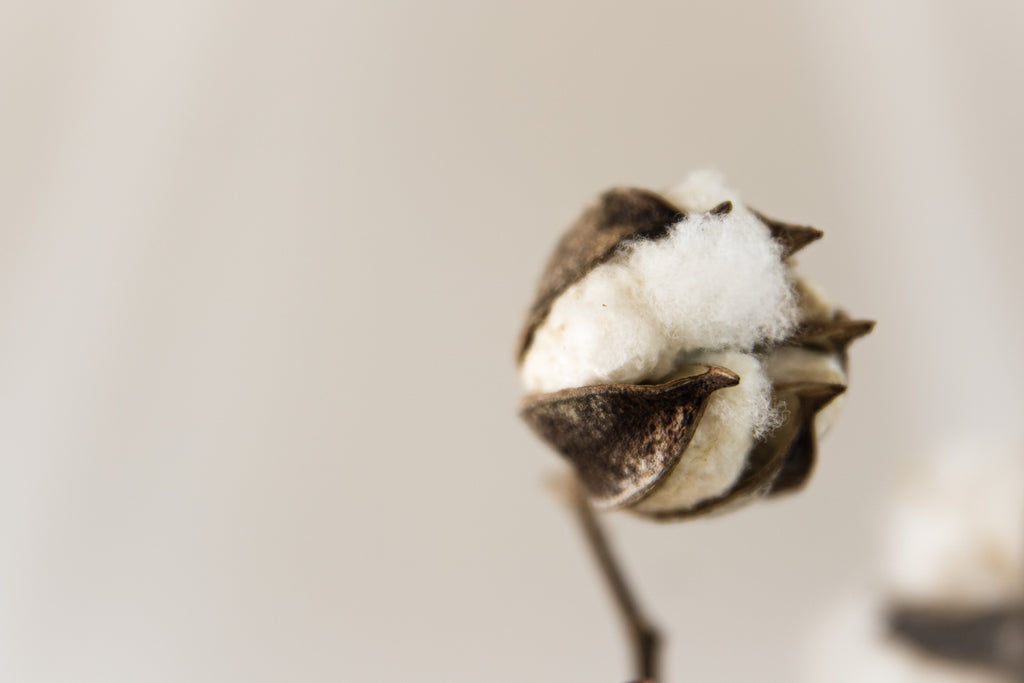
My name is Birgit Wyss and I have been crafting for over 45 years. I made something more out of this versatile passion in 2016 and founded my online shop and brand Chiemseegarn. We have been producing gradient yarns from polyacrylic and cotton since 2016, which is why I would like to answer the question in this blog post: why do we produce gradient yarns from polyacrylic and cotton?
Polyacrylic is a synthetic fiber that is very durable, machine washable and also colourfast. We use them in our gradient yarns to combine the advantages of this synthetic fiber with the advantages of cotton.
But that's not all, gradient yarns made of polyacrylic offer many other advantages, namely that they are light and dimensionally stable. How to bring your work back into shape with hair conditioner or how to get it in shape without the annoying tension is described in the course of this article. or
Why do we make our gradient yarns from polyacrylic and cotton?
We manufacture our color gradient yarns from polyacrylic and cotton because this makes our yarns both durable and machine washable, as well as pleasant and skin-friendly.
Our gradient yarns are ideal for all kinds of handicrafts, whether knitted or crocheted. You can make dreamy waistcoats and jackets out of it, soul warmers to snuggle up in, casual tunics and of course shawls, scarves and loops in all imaginable shapes, sizes and colors. It is also the ideal material for blankets or baby blankets.
What are the advantages and properties of polyacrylic in gradient yarn?
Polyacrylic is a synthetic fiber and has a soft feel, similar to that of wool, and has a heat-insulating effect.
- machine washable up to 40°
- suitable for the dryer
- the natural fibers tangle less
- Due to the fact that the fibers have a low density, they are very light
- Polyacrylic absorbs very little moisture and is therefore quick-drying
- Polyacrylic fibers are fluffy and similar to wool - so they retain heat well and have an insulating effect
- it creases very little
- it can be colored well
- it is elastic
- it's soft
- it is also suitable for allergy sufferers
- hardly pills
Polyacrylic is usually cheaper to buy and therefore the gradient yarns are not that expensive. This is a good solution, especially if you have to keep an eye on the money or have just started crafting. Apart from that, the global production of natural fibers would not be sufficient to meet the demand for textiles!
Yarns with a plastic content do not usually felt (that's why sock yarns also have a plastic content!) and can be ruffled without any problems, which is hardly possible with yarns with long fibers such as mohair. Our yarns made of cotton with polyacrylic are also suitable for the vegan lifestyle. Cotton fits in perfectly with the topic of sustainability, which is very topical at the moment, because it is a renewable raw material. The wearing comfort is high because it is breathable, very absorbent and light in weight. Where there are advantages, there are unfortunately also disadvantages. Because the gradient yarns are mixed in terms of the material, the advantages are increased on the one hand and the disadvantages minimized. The production of polyacrylic requires a lot of energy, much more than that of cotton. Polyacrylic is also based on acrylonitrile, which is made from petroleum. However, there are already research projects that want to produce polyacrylic from renewable raw materials. Another problem with polyacrylic is that washing microplastic is produced. It has been researched that a garment can lose up to 1,900 fibers per wash, which end up in the sewage system. Sewage treatment plants are often unable to filter out the tiny particles completely, so they end up in bodies of water and the sea. This can be avoided or at least greatly reduced by only running the washing machine fully loaded with polyacrylic, with short wash cycles and low spin speeds. Polyacrylic is currently very little recycled, although there are already a number of approaches to do so. You can hand in unwearable clothing and materials to the nearest recycling center. The employees know best about professional recycling. If the things are still in good condition, you can also take them to a thrift store. Cotton also has small disadvantages, which in my opinion are not very relevant. Due to its low elasticity, it creases easily and becomes quite heavy when wet. It can quickly look washed out with inferior colors. If you want to be sure that cotton does not change in size or shape when washed, you should knit or crochet a small gauge and wash it in the machine. By using different materials, the advantages of the different materials are combined. With our gradient yarns, for example, the cotton ensures that the finished product feels pleasantly soft and is also highly breathable. The polyacrylic content, on the other hand, ensures durability and makes it possible for the yarn to be washable and very dimensionally stable. There are also gradient yarns that are made exclusively of polyacrylic, which is not objectionable. Then, of course, only the advantages and disadvantages of this material come into play and not those of the attached material. This means that advantages and disadvantages cannot offset or complement each other. Polyacrylic - to be precise it's called polyacrylonitrile (PAN) - is similar to polyester a petroleum-based synthetic fiber consisting of polymerized acrylic fibers. In its pure form it is hard and inflexible, but it can be dissolved in certain chemicals and thus converted into the polyacrylic fibers required for textile production. Polyacrylic is often added to other materials to complement their positive properties.If you want to work durable works, whether crocheted or knitted, you should pay attention to a mixture of polyacrylic with another material In this article, I will explain how gradient yarns are made from polyacrylic and why the properties of polyacrylic and cotton complement each other so well. Polyacrylic is produced using both the wet spinning and the dry spinning process. The mass to be spun is either pressed through a nozzle into a warm air shaft or shot into a precipitation bath with a special chemical, in which the material then solidifies. Polyacrylic is always manufactured and used as so-called crimped staple fiber. Cotton is a natural plant fiber consisting of about 91% cellulose, which is obtained from the fruit capsules of the cotton plant (belongs to the mallow family). There are 51 types of cotton in the world, but only 4 of them are used, namely: Highland cotton is the most used worldwide, accounting for around 90% of total production. A very high-quality and also more expensive type is the Sea Island cotton fiber with a share of approx. 8%). When the cotton fruit is ripe, the seeds burst and the typical cotton-like image of the mature cotton plant appears. These cotton bolls are either harvested traditionally by hand or by machine. However, since not all fruits ripen at the same time in most species, there is a lot of waste when harvesting by machine. Now the contents of the capsule must be separated from the remains of the fruit capsule, the seeds and leaves. The seeds combed out are processed into oil or planted again. The seed coats are used in animal feed or chicken bedding. Next, the cotton fibers are pressed into bales, sent to cotton mills, where they are sorted and classified according to quality characteristics, purity and staple length. These spinning mills are mostly located near the growing areas in Asia and India. The fibers are now shaped and twisted into yarn by a spinning machine. A chemical impregnation liquid is added that prevents the thread from tearing during weaving - but later it washes out again. When cotton is "mercerized", i.e. it is refined with caustic soda, the structure of the cotton changes. The cell wall of the fiber swells, the surface is smoothed, making the cotton easier to dye and wash. There are many other yarns made from cotton, depending on the intended use, e.g.: Graduated yarns can be made from many different blends, the following blends are often used: In the next paragraph I explain the ratio of the different materials used There are different mixing ratios for gradient yarns. We use yarns made from 50% cotton and 50% polyacrylic. But there is also the ratio 60/40 or 75/25. In this way, the advantages of each are emphasized and the disadvantages are reduced, depending on what is important to you. A glitter thread in a number of colors can be added as an additional thread, for example, or even a sequin or pearl thread. There are also yarns in which merino wool is added to the polyacrylic instead of cotton, or alpaca and/or wool are added. Again, the ratio is plus/minus 50/50. There are also gradient yarns that contain about 20% mohair. If three components are included, the ratio is usually in thirds, for example 34% silk, 33% polyacrylic and 33% cotton. The variants are diverse and everyone can choose the yarn that best suits them in terms of processing, the purpose of the finished work and of course their preferences. But as mentioned before, the disadvantages complement and balance each other and the advantages of the two different materials come together beautifully and are wrapped into our beautiful gradient yarns. Since our color gradient yarns can be machine washed at 40°, but fabric softener only becomes active at 60°, you can add a dash of hair conditioner as a fabric softener substitute. This softens the work, gives it a beautiful shine and a pleasant scent. Since polyacrylic does not tolerate great heat, the works made of our color gradient bobbles cannot be ironed. To make them nice and smooth, simply lay them out on a blanket or carpet while damp, pluck them into shape and let them dry. So you don't need any needles for tensioning. Clothing can also be wrapped in a towel after washing, squeezed out a bit and then laid flat to dry or hung on a hanger.What are the advantages and properties of cotton in gradient yarn?
Can you use a mixture of polyacrylic and cotton in the gradient yarn to compensate for the disadvantages of the individual raw materials?
Why don't we just make our gradient yarns out of polyacrylic?
What is polyacrylic?
How is polyacrylic made?
What is cotton?
How is cotton made?
The processing of the cotton plant
What other yarns are made from cotton besides gradient yarns?
Can you add other fibers to polyacrylic?
In what ratio are fibers mixed in gradient yarns?
Tips and tricks for the correct care of gradient yarns made of polyacrylic and cotton

